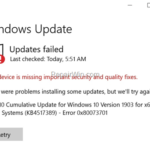As you may know, Windows 10 will be the “last version” of Windows, because with Windows 10, Microsoft has introduced a new way to build, deploy, and service Windows: “Windows as a service”. In this way, Microsoft will update Windows 10 with new features and improvements twice per year (aka “Feature updates”), and with security and driver updates at each month (aka “Cumulative Updates” or “Quality updates).
Although updating Windows 10 is very important to keep your system up to date with the latest enhancements and security features, the update process is not always successful. So in this tutorial I will present the most effective methods and solutions for installing Windows 10 Updates without problems.
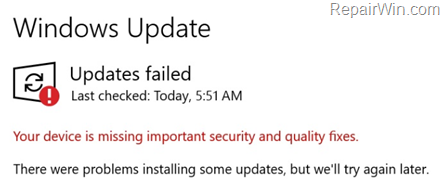
How to FIX Problems in Windows 10 Update.
- Part 1. General Steps to Avoid Windows 10 Update Problems.
- Part 2. Common Methods to Fix Windows 10 Update problems.
- Part 3. Other Methods to Resolve Problems in Windows 10 update.
Part 1. General Steps to Avoid Windows 10 Update Problems.
If you having problems to install Windows 10 updates, then before trying anything else, apply the following steps:
- Step 1. Ensure that you have enough free space on your disk. Windows 10 requires at least 32 GB of free space to upgrade.
- Step 2. Run Disk Cleanup and delete all the useless files.
- Step 3. Download and install latest Servicing Stack update according your Windows 10 version.
- Step 4. Disconnect all external USB drives & SD cards and any other USB device that don’t needed to install Windows.
- Step 5. Temporarily uninstall any non-Microsoft Antivirus/Security software.
- Step 6. Install the latest device drivers, especially for the Graphics Card, the Chipset, the Ethernet & the Wireless adapter (if any). *
* Note: If after applying the instructions in this article, the Windows 10 Upgrade Installation still fails, proceed and update also the BIOS (Firmware) on your system.
- Step 7. After applying the above steps, try to install the Windows update(s) again and if the updates cannot be installed, proceed to Part-2.
Part 2. Common Methods to FIX Windows 10 Update problems.
Method 1. Re-Download the Windows Update(s).
The most effective solution to troubleshoot Windows 10 update problems, is to force Windows to download the updates from scratch. To do that:
Step 1: STOP the Windows Update Service.
1. Open Windows Services control panel: To do that:
- Press Windows
 + R keys to open the run command box.
+ R keys to open the run command box. - In the Search box, type: services.msc & click OK.
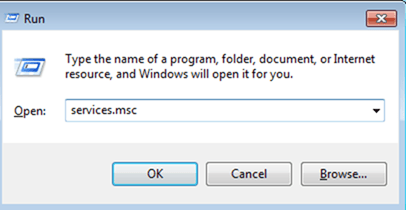
2. In Services control panel locate the “Windows Update” service.
3. Right-click on Windows Update service and select “Stop“.
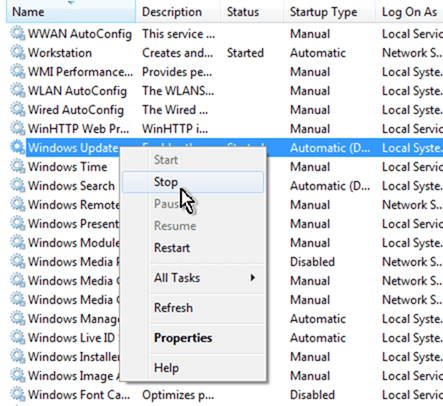
Step 2: Delete the SoftwareDistribution folder.
1. Open Windows Explorer and navigate to: C:Windows folder.
2. Find and Delete the “SoftwareDistribution” folder (or rename it. e.g. to “SoftwareDistributionOLD”) . *
* Note: If you cannot delete the folder, start Windows in Safe Mode.
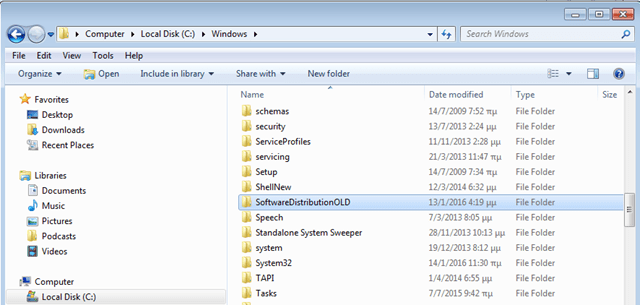
Step 3: START the Windows Update Service.
1. Open Windows Services control panel.
2. Right-click on Windows Update service and select “Start“.
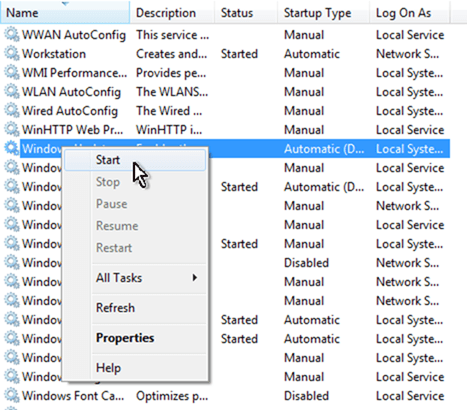
Step 4. Check & Install Updates.
1. Go to Settings -> Update and Security -> and click Check for Updates.
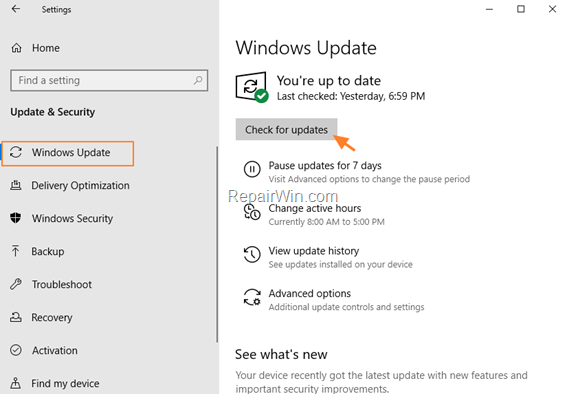
Method 2. Update Windows 10 by using the Update Assistant.
1. Navigate to Windows 10 download site and click the Update now button.
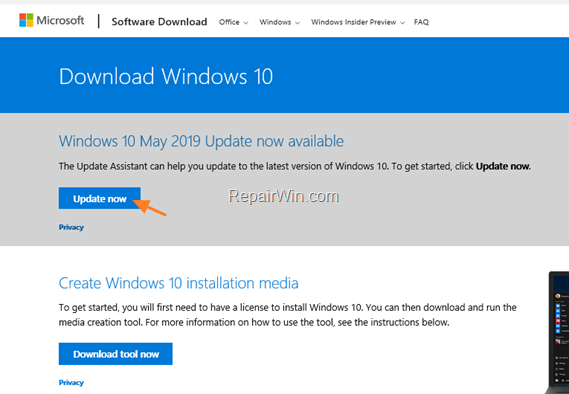
2. Save the “Windows10Upgrade9252.exe” file on your desktop.
3. Double click at the downloaded file to open the Windows Upgrade Assistant.
4. Click Update Now to start the update.
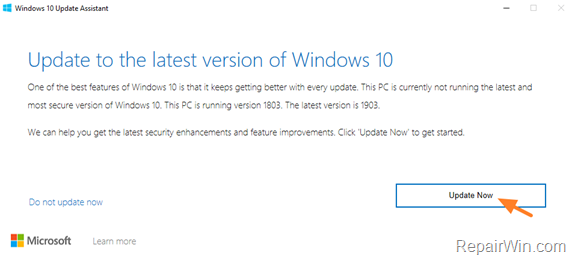
5. Let Windows to finish the downloading and the verification.
6. When the verification is reaches 100%, disconnect your computer from the Internet, (or set it to “Airplane mode” if you own a laptop).
7. Wait until Windows updating your system.
8. When prompted, restart your system to install the update.
Method 3. Update Windows 10 from ISO or USB.
The next method to bypass problems while installing updates in Windows 10, is to update Windows, from the Windows ISO file. To do that:
Step 1. Download Windows 10 in a ISO File.
1. Navigate to Windows 10 download page and download the Media Creation Tool.
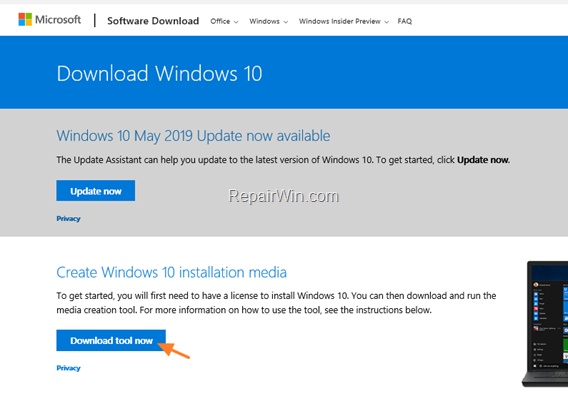
2. Run the ‘Media Creation Tool’ and Accept the License Terms at the first screen.
3. Select Create installation media for another PC.
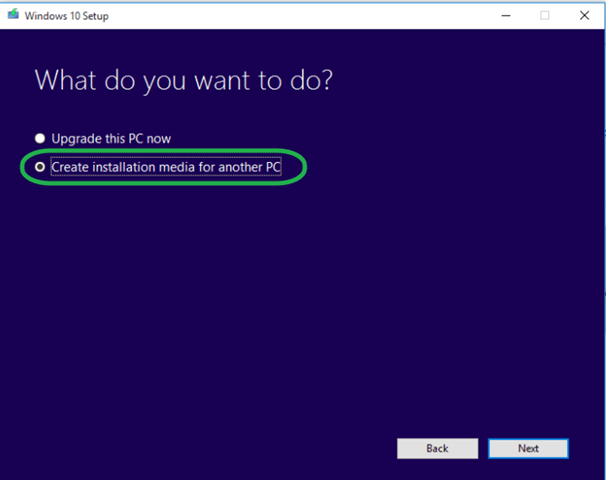
4. At ‘Language, architecture and edition’ screen click Next.
5. Select ISO file and click Next.
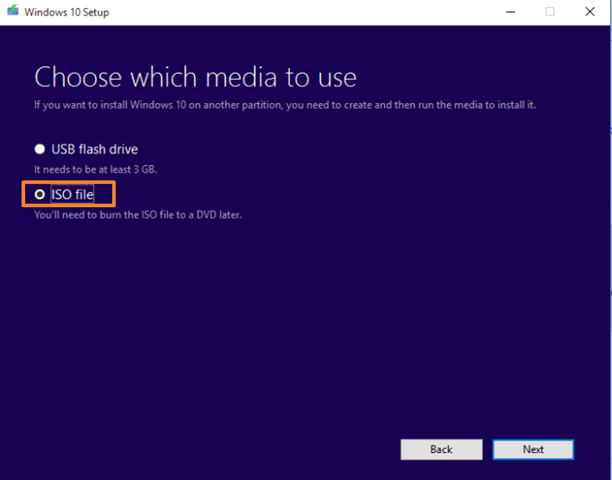
6. Save the ‘Windows.iso’ file to your desktop.
7. The Media Creation Tool will now begin to download the Windows 10 in an ISO format.
8. When the download is completed, close the Media Creation Tool.
Step 2. Update Windows 10 from the ISO file.
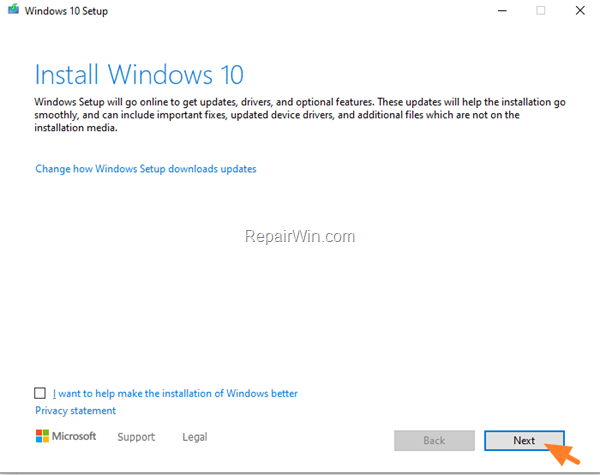
4. Accept the License Terms and then click Install.
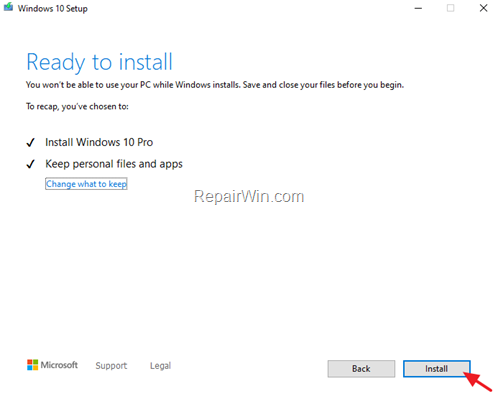
5. Now wait the update process to complete. *
* Note: If the update fails again, burn the Windows ISO file to a USB drive and then try to repair and upgrade Windows 10 from USB.
PART 3. Other Methods to Resolve Problems in Windows 10 update.
FIX 1. Repair Windows Component Store & System Files.
1. Open Command Prompt as Administrator.
2. In command prompt give the following command and press Enter:
- DISM /Online /Cleanup-Image /StartComponentCleanup
![image_thumb[6] image_thumb[6]](https://qnet88.com/wp-content/uploads/2021/12/image_thumb6_thumb-14.png)
3. When the process is completed, give the following command:
- DISM.exe /Online /Cleanup-image /Restorehealth

4. When the DISM operation is completed, type the following command and hit Enter:
- sfc /scannow

5. Now wait until the System File Checker repairs the Windows System Files.
6. When this done, restart your computer.
FIX 2. Disable the Secure Boot.
1. Power On your system and immediately press the corresponding key* to enter into BIOS SETUP.
* Note: Usually to enter in BIOS, you have to press the DEL or F1 or F2 or the F10 key. (depends on manufacturer)
2. Look at Security or at Boot Options, or at Authentication settings,* to find the Secure Boot option and Disable it.
* Notes:
1.The location of the ‘Secure Boot’ setting in BIOS, depends on device’s manufacturer.
2. If you cannot find the ‘Secure Boot’ setting, then Disable the CSM Support and then Save and Exit form BIOS setup. Then enter into BIOS setup again to find the Secure Boot.
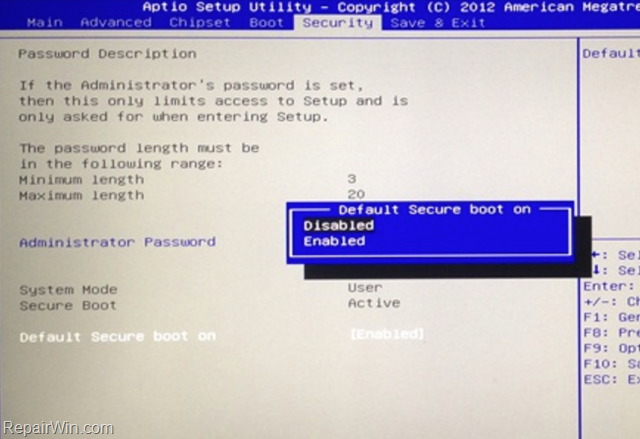
3. Save settings and EXIT BIOS Setup.
4. Let Windows to boot normally and try to install the update.
FIX 3. Repair Hard Disk Problems.
1. Open Command Prompt as Administrator. To do that:
1. Press the Windows ![]() + R keys to open the ‘Run’ command box
+ R keys to open the ‘Run’ command box
2. Type CMD and then press CTRL + SHIFT + ENTER.
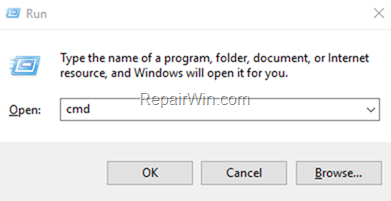
2. At command prompt give the following command to repair your disk and press Enter.
- chkdsk C: /F /R
3. Press the Y key to schedule the checking at the next restart.
4. Restart your computer.
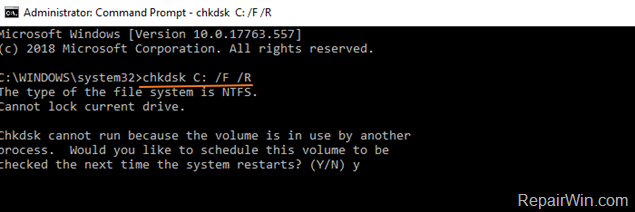
5. Now wait for the disk check process to finish. (it will take several hours).
FIX 4. Clean install Windows 10.
The last method, to fix the Windows 10 Upgrade issues, is to perform a clean installation of Windows 10 on your system.
Important: The clean Windows 10 installation means that all your files and settings will be lost during the installation process. So, proceed and backup all your important files and settings to another storage media before continue. (e.g. to an external USB drive).
To perform a clean Windows 10 installation read the instructions on this article: How to clean install Windows 10.
That’s all folks! Which method worked for you? Please leave a comment in the comment section below or even better: like and share this blog post in the social networks to help spread the word about this solution.

1. Double-click at the Windows.ISO file on your desktop.
2. Open File Explorer and explore the contents of the new drive letter created after opening the ISO file.
3. Double click at setup.exe and then click Next to install Windows 10.

